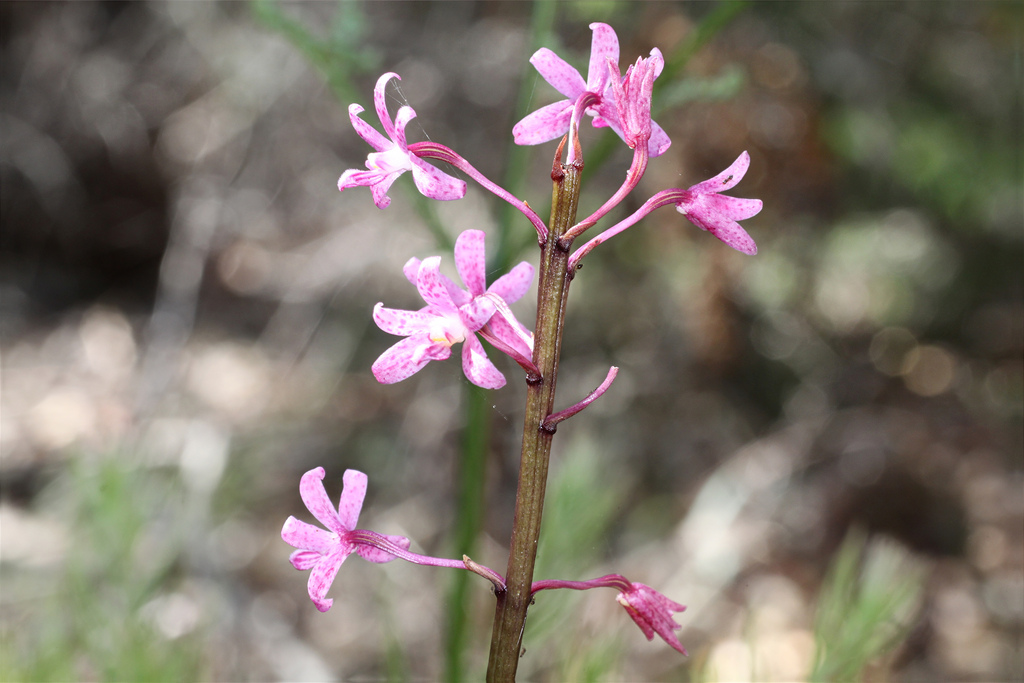The team was led by Sahut Chantanaorrapint, a professor from the Department of Biology of the Faculty of Science at Prince of Songkla University. The discovery was published in an international botanical journal, PhytoKeys.
Mr Sahut said the Paribatra orchid was named after the waterfall where it had been discovered by researchers.
The mycoheterotrophic orchid is partly or entirely non-photosynthetic. It obtains energy and nutrients from fungi. The branch can grow up to 150 centimetres and is full of flowers, he said.
The flowers come in white and soft yellow colours and its blooming season starts from October to December. Mr Sahut added the orchid’s petals have a floral symmetry.
 Apart from the Paribatra waterfall, Aphyllorchis periactinantha can also be found in Ban Yang Ko community forest in Songkhla and in Yala and Narathiwat provinces.
Apart from the Paribatra waterfall, Aphyllorchis periactinantha can also be found in Ban Yang Ko community forest in Songkhla and in Yala and Narathiwat provinces.
Mr Sahut said the orchid might not have much market value as it cannot be bred as an ornamental plant; however, it could be used to promote ecotourism.
Before the discovery, Mr Sahut said the area around Paribatra waterfall had been developed as a tourist spot.
Later, Ton Nga Chang Wildlife Sanctuary staff were assigned to manage its ecological restoration, resulting in the growth of local bacteria and fungi which are good for mycoheterotrophic plants.
According to bangkokpost.com













